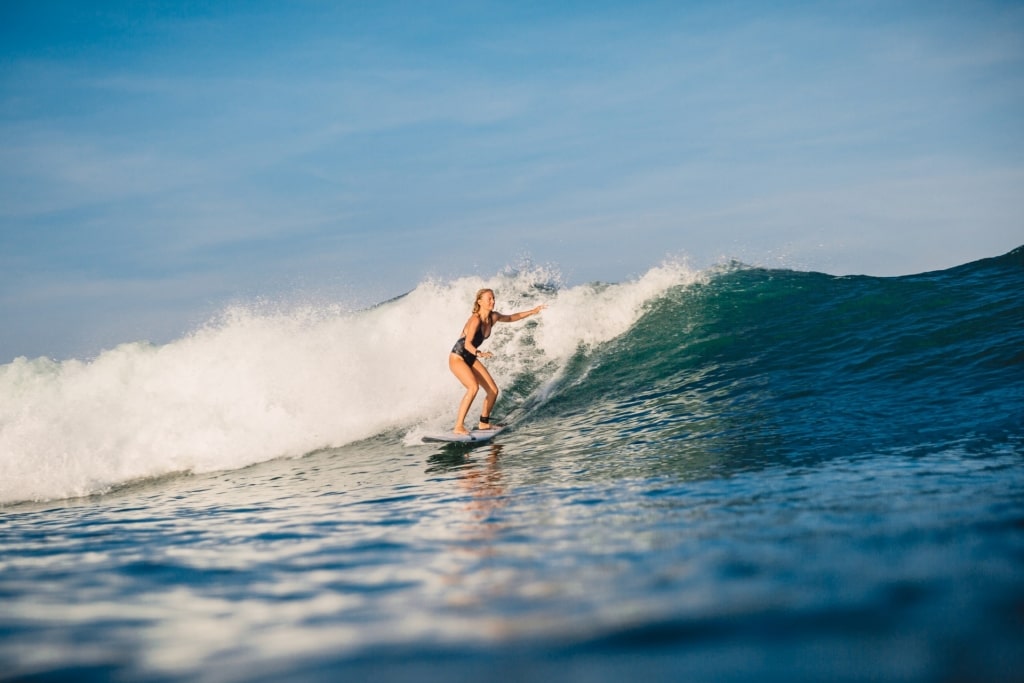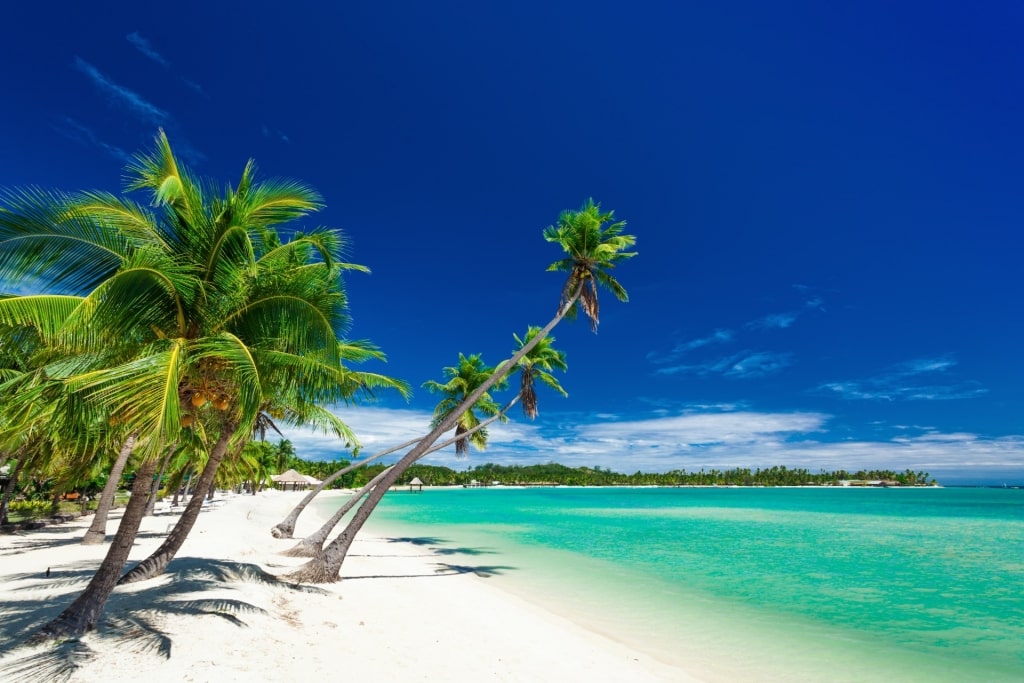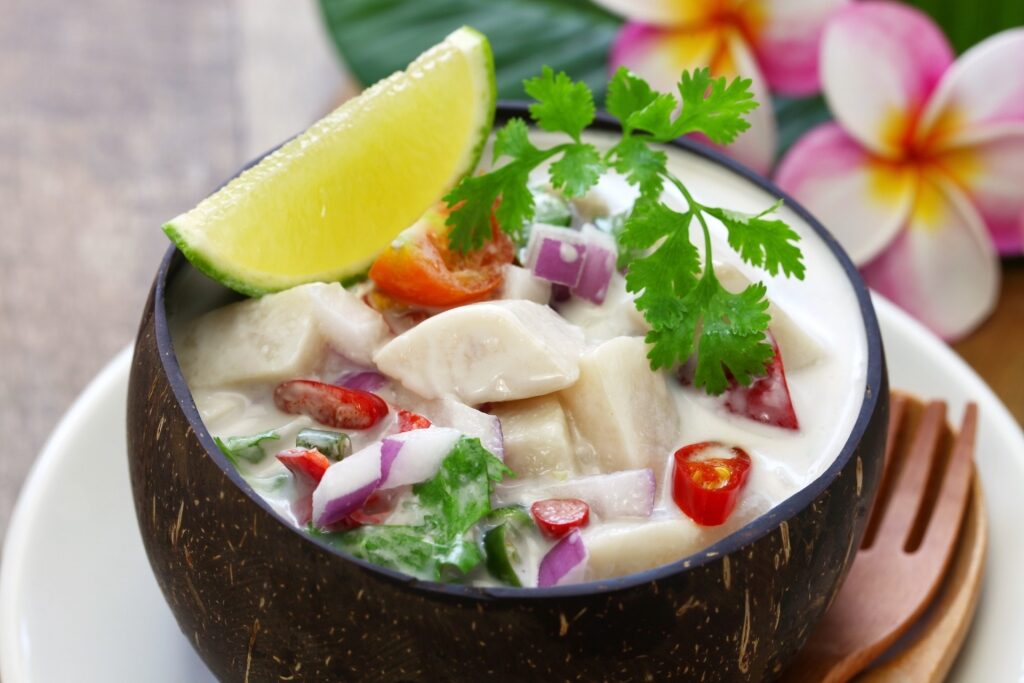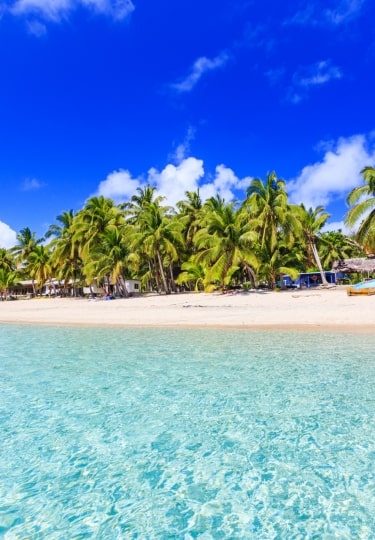With two distinct seasons (wet and dry), the best time to visit Fiji, in all its lush, tropical glory, will vary depending on what you’re looking for. The dry season, from May to September, may sound most attractive due to the lack of rain; however, during the wet season, the temperatures are higher.
Luckily, for the most part, showers are brief between October and early January, making this period, along with April and May, equally tempting. During these months you’ll avoid the peak tourism and cyclone season, and can enjoy the beaches free from crowds.
Visiting Fiji By Season
Summer
Fiji’s summer months, from January to March, are hot and humid, with the possibility of cyclones. While temperatures are usually around 68°F to 91°F (20°C to 33°C), rain showers are longer and more common, although January’s showers can be short, quick passing bursts, making this a good time to visit Fiji.
February usually brings up to 15 days of rainfall. While the Hindu celebration of Holi is celebrated on the island during this month—or early March, depending on the calendar—for many, it’s still not reason enough to risk the less favorable weather during these two months.

Surfing
Fall
Fall on the islands (April to June) is considered one of the best times to visit Fiji for a more tranquil stay. Most of the rainy days have been and gone by mid-April, as has the peak tropical cyclone season, making quiet beach days soaking in the warm temperatures a peaceful experience.
The dry season starts during fall, when temperatures hover between 68°F and 84°F (20°C to 29°C). Kiteboarding and surfing are popular during these dates as the trade winds are stronger, and as there’s much less rain, marine life sightings when snorkeling or scuba-diving are aided by clearer visibility.
Winter
Visiting Fiji during winter (July to September) means slightly cooler days, especially in the evenings, and packing more lightweight layers is advised as temperatures range between 66°F to 78°F (19°C to 26°C).
As rain is very unlikely during this period, it’s regarded as Fiji’s high season, with an abundance of events, such as the Bula Festival, a celebration of music, food, and culture, and plenty of visitors relaxing on the more crowded beaches.
Spring
October to December is one of the best times to go to Fiji, as the temperatures start to climb again during spring, ranging from 70°F to 84°F (21°C to 29°C), and the visitor numbers thin. While the wet season begins in November, showers are usually short, heavy blasts that clear the humidity, a pattern that continues until late January.
December arrives with an action-packed calendar of events leading up to Christmas, especially on the isle of Rotuma, where the traditional Fara celebrations last for six weeks.
Even with the rainy season’s arrival, travelers can still enjoy everything the island is famous for, from the kava ceremonies to the soft white sand beaches, dipping into a bar for a cocktail to escape the short bursts.

Beach in Fiji
When Is Rainy Season?
The wet season in Fiji lasts from November to April, with the highest concentration of warm rains during February and March.
While these months see more constant rain and storms, on either side, showers are usually heavy but short and pass quickly, allowing for intermittent blue skies and sunny days.
November, December, January and April can still be some of the best times to go to Fiji, especially if you want to avoid the crowds. Nadi makes for a good base during the wet season, as you have plenty more indoor dining options—including nearby Denarau Island—museums, and temples to visit on a rainy day.
Peak tropical storm season is usually from late January to March, and although strong winds can occur any time of year, it’s during this period when alerts are most common.
When Is High Season?
For many travelers, the best time to visit Fiji is during the high season months of June to September. The drier and warm, if not humid and tropical, days lure countless visitors to the breathtaking beaches, though, so it can feel a little crowded, especially around Nadi’s main resorts.
December and January are also two of the most popular months to visit Fiji, for a sun-kissed escape during the holiday season.
When Is Shoulder Season?
Fiji’s shoulder season is generally considered to be April to June, plus October and November, all of which can also be great months to visit the islands.
With crowds thinning out on the beaches and a better chance to get that perfect sea view table for a seafood lunch, the odd quick shower is a worthwhile trade-off for a more serene experience.

Kokoda
When Is Low Season?
Fiji’s low season is during the wettest, cyclone-prone period from late January until March. To experience everything Fiji is famous for, such as the dazzling beaches and endless blue skies, it’s best to avoid visiting during this period.
Ready to explore the tropical islands of Fiji and experience the renowned Bula welcome? Browse Celebrity’s cruises to Fiji to start planning your next dream vacation.





